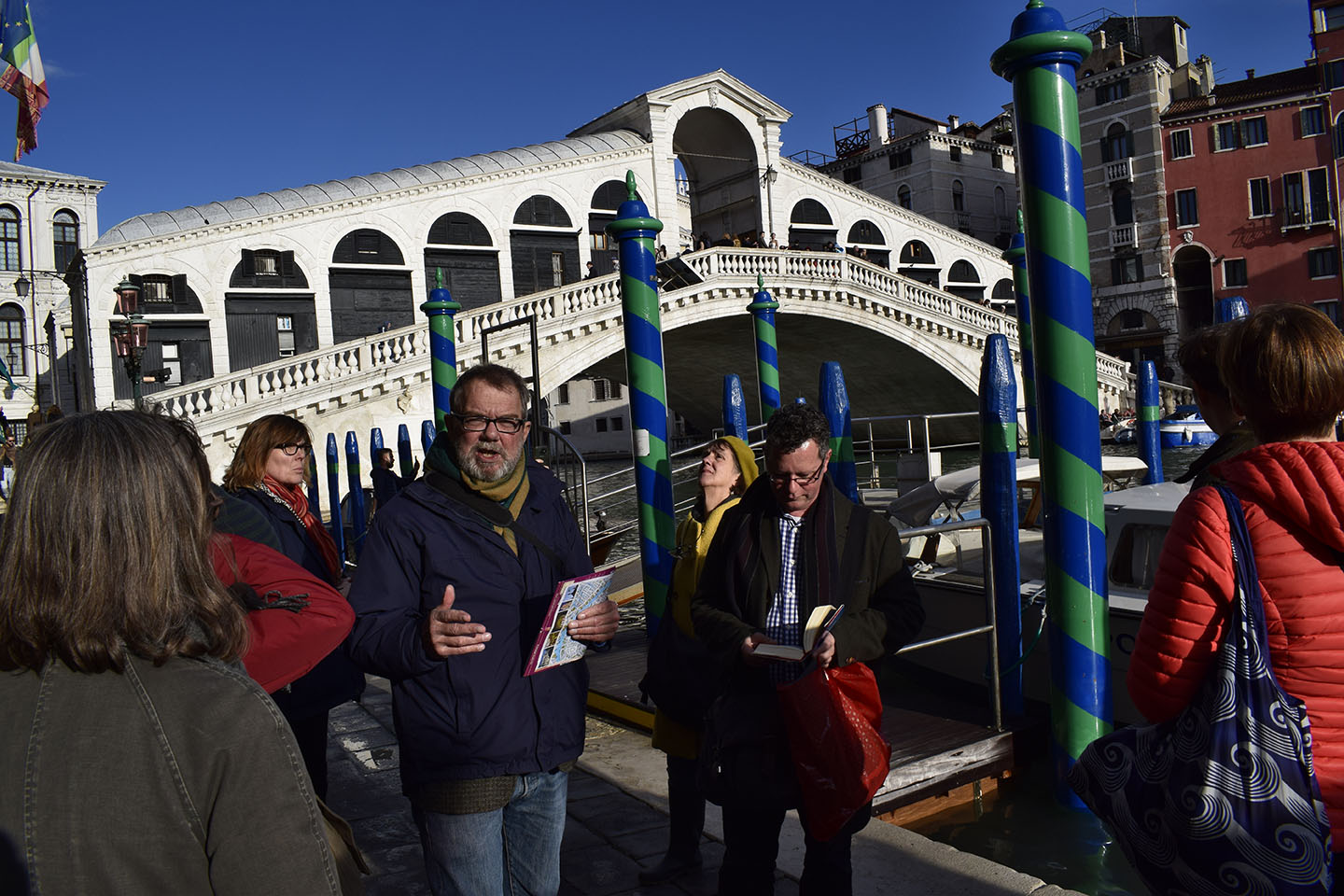

The annual Venice trip is an educational tour of the famous city of Venice attended by second year BA Conservation students, Historic Carving students and those studying MA Art & Material Histories.
As reported in a recent news article, our 2019 Venice trip in November coincided with the worst flooding in Venice for many years. Despite the logistical challenges that came with the high tides, we were still able to complete the majority of our itinerary and witnessing first-hand the destruction caused by the water emphasised to us the fragility of the unique treasure that is Venice.
Here are some of the highlights of the trip.
We started with an introduction to the layout of the City and its relationship to the Molo, the Piazzetta and the Piazza San Marco, focusing on the external tour of the buildings of the Piazza San Marco; the cultural, religious and governmental centre of the city, which boasts structures built in the full range of architectural periods –
- The Byzantine Basilica, with Gothic additions
- The Doge’s Palace; Gothic
- The Torre Dell Orologio; Early Renaissance
- The Sansovino Library and Logetta; High (or Roman) Renaissance

We toured the exterior of the buildings of the Piazza San Marco; the cultural, religious and governmental centre of the city. The Doge’s Palace is Byzantine, a Gothic, and Renaissance Palace and seat of government. We learnt how history was mythologised in praise of the State.


This was followed by an independent visit to Museo Correre and Biblioteca Marciana, San Marco, Museum of the History of Venice. The collection of classical sculpture was very interesting. The interior of Sansovino’s Library was also well worth seeing.

We visited the Canton Synagogue at the heart of the world’s first ghetto with Art School Conservation Tutor, Jennifer Dinsmore, who gave the students fascinating insights into this impressive building with complex conservation challenges.
We were lucky to watch the live Conservation of the terrazzo floor, a composite material using various stones like marble, quartz, granite set in mortar, at the 16th-century Schola Grande Tedesca.

After a walking tour focusing on the Early Renaissance in Venice Gateway to the Arsenale, we visited the Basilica San Marco, the legendary location of the body of St Mark, the patron Saint of Venice. This is a fully Byzantine building, internally covered in mosaic. Externally it is elaborated with a Gothic ornamental scheme. The tutors led a discussion of past conservation treatments, their approaches and impacts, and we viewed a recent conservation project in the Basilica.

Following a visit to Chiesa di San Trovaso, displaying relief carvings by the Bon family and paintings by Tintoretto, we went to the Church of San Pantalon, where we were all amazed by the world’s largest painting on canvas on the ceiling.

We passed through the commercial centre of the city around the Rialto and its markets, and circled the east side of Venice, taking the vaporetto to Murano. We explored this small island famed for its glass blowing workshops, and visiting the Santa Maria e San Donato.

As well as exploring some of Venice’s most significant and spectacular buildings and monuments, the students also attended a range of lectures given by the Art School’s Conservation, Historic Carving and Art Histories Tutors who accompanied us on the trip.

The lectures included an historical overview of Venetian architecture, which is unique due to the city’s location and close trade links with the East. This lecture was delivered by Head of Historic Carving Tim Crawley, who also gave a lecture on Venetian sculpture and carving, which ranges in style from Classical to Baroque.
Conservation Tutor, Jennifer Dinsmore (an expert in stone conservation), gave a lecture on the construction and topography of Venice, focusing on the development of the city and the environmental and human challenges it faces today. Jennifer also gave a presentation about Venice’s unique conservation issues, looking at practical, technological, strategic and resourcing risks as well as funding and politics.
At the end of the 5-day trip, we learnt about the conservation work being undertaken by alumna Jonida Mecani and MA student Miyuki Kajiwara, who were both selected to take part in a two-month conservation internship on the island of San Giorgio Maggiore, where they are conserving the stone statues around the inner walls of one of the entrances of Palladio’s Church. The conservation placement is organised annually in collaboration with Venice in Peril and gives two outstanding graduates the opportunity to undertake a conservation project in this remarkable environment.


We left Venice having learnt an enormous amount about its unique and complex conservation requirements, and with our thoughts still with our Venetian colleagues and friends and the reparation challenges to come.


